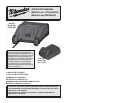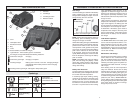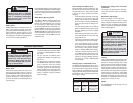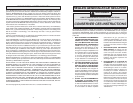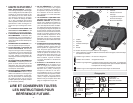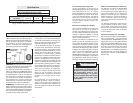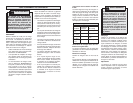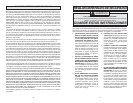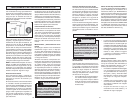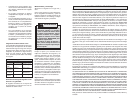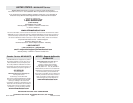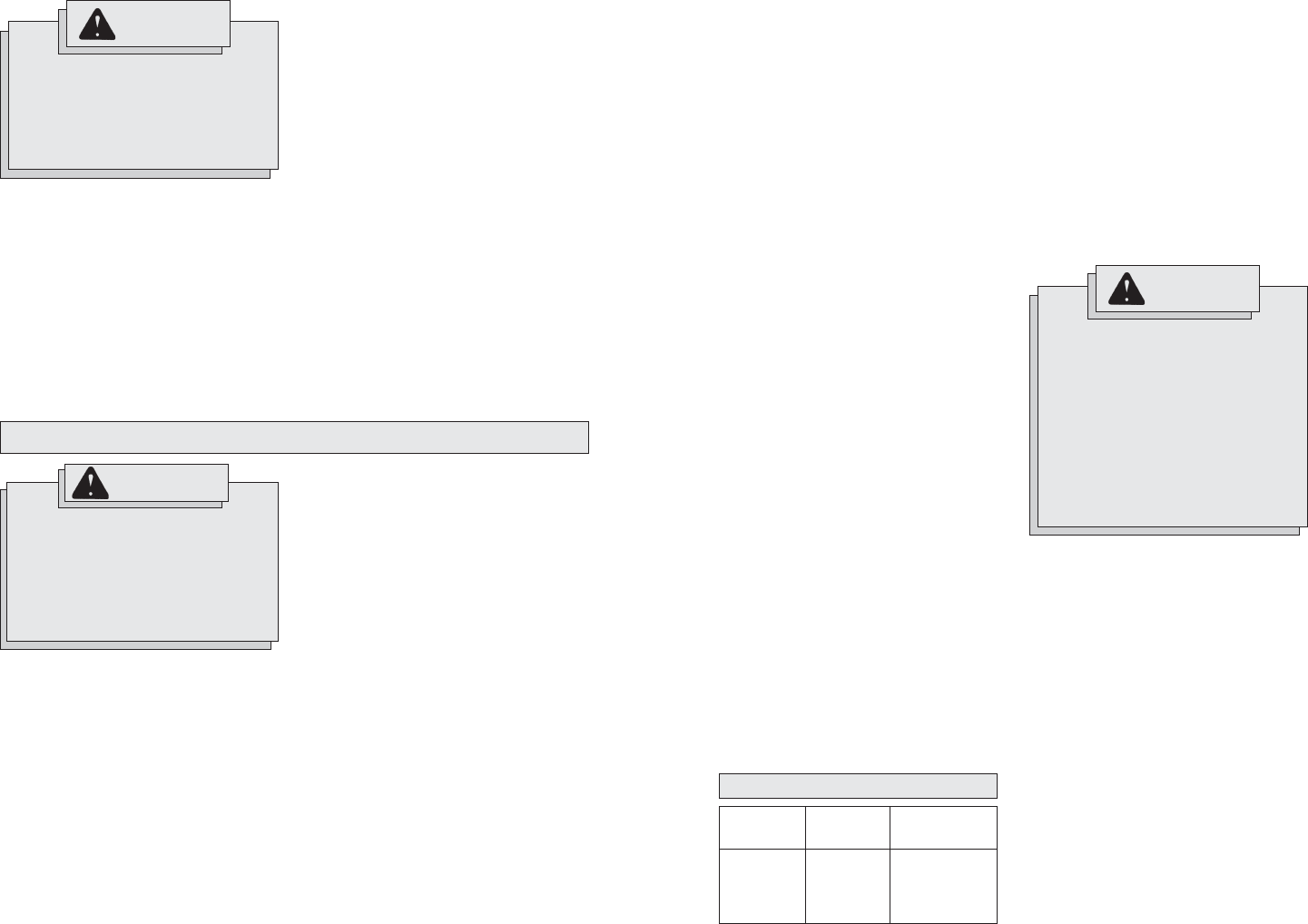
6 7
WARNING
To reduce the risk of injury or
explosion, never burn or incinerate
a battery pack even if it is damaged,
dead or completely discharged.
When burned, toxic fumes and
materials are created.
Disposing of MILWAUKEE Lithium-Ion
Battery Packs
MILWAUKEE Lithium-Ion battery packs are
more environmentally friendly than some
other types of power tool battery packs (e.g.,
nickel-cadmium). Always dispose of your
battery pack according to federal, state and
local regulations. Contact a recycling agency
in your area for recycling locations.
When to Charge the MILWAUKEE Li-Ion
Battery Pack
Remove the battery pack from the tool for
charging when convenient for you and your
job. MILWAUKEE battery packs do not de-
velop a "memory" when charged after only
a partial discharge. It is not necessary to
run down the battery pack before placing it
on the charger.
Charge only MILWAUKEE Lithium-
Ion battery packs in the MILWAUKEE
Li-Ion Battery Charger. Other types of
batteries may cause personal injury
and damage. Battery pack and char-
ger are not compatible with V™-tech-
nology or NiCd systems.
WARNING
How to Charge the Battery Pack
Place the battery pack onto the bay by slid-
ing the pack on from the top of the bay. The
red light will turn on, either fl ashing (pack
is too hot or cold) or continuous (pack is
charging).
• A fully discharged pack with an internal
temperature in the normal range will
charge in about half an hour (between
32°F and 150°F). Heavily cycled battery
packs may take longer to charge com-
pletely.
• The Fuel Gauge lights on the battery
pack are displayed as the pack is being
charged, indicating how fully charged
the pack is.
• After charging is complete, the continu-
ous green light will turn on and the fuel
gauge will turn off.
• The charger will keep the battery pack
fully charged if it is left on the charger.
• If the light indicator flashes red and
green, check that the battery pack is fully
seated into the bay. Remove the pack
and reinsert. If the problem persists,
contact a MILWAUKEE service facility.
• If the light indicator does not come on,
check that the battery pack is fully seat-
ed into the bay. Remove the pack and
reinsert. If the light indicator still does
not come on, contact a MILWAUKEE
service facility.
Charging a Hot or Cold Battery Pack
The Red fl ashing indicator light on the char-
ger indicates that the battery pack tempera-
ture is outside the charging range. Once the
pack is within the acceptable range, normal
charging will take place and the red light will
be continuous. Hot or cold battery packs may
take longer to charge.
CHARGER OPERATION
WARNING
To reduce the risk of injury, always
unplug the charger and remove
the battery pack from the charger
before performing any maintenance.
Never disassemble the battery pack
or charger. Contact a MILWAUKEE
service facility for ALL repairs.
To reduce the risk of injury and
damage, never immerse your battery
pack or charger in liquid or allow a
liquid to fl ow inside them.
Battery Pack
Temperature
150°F or more
32°F to 150°F
14°F to 32°F
14°F or less
Red Charger
Indicator Light
Flashing
Continuous
Continuous
Flashing
Charging Status
Not charging
Normal charging
Warm-up charging
Not charging
Li-Ion Charging Status
Cleaning
Clean out dust and debris from charger vents
and electrical contacts by blowing with com-
pressed air. Use only mild soap and a damp
cloth to clean the battery pack and charger,
keeping away from all electrical contacts.
Certain cleaning agents and solvents are
harmful to plastics and other insulated parts.
Some of these include gasoline, turpentine,
lacquer thinner, paint thinner, chlorinated
cleaning solvents, ammonia and household
detergents containing ammonia. Never use
fl ammable or combustible solvents around
battery packs, charger, or tools.
Repairs
The MILWAUKEE Li-Ion charger has no
serviceable parts.
Powering the Charger with an Inverter
or Generator
The charger will operate with most gen-
erators and inverters rated at 300 Watts
or higher.
Maintenance and Storage
Store your charger in a cool, dry place.
As a general practice, it is best to unplug
battery chargers and remove battery packs
when not in use. No battery pack damage
will occur, however, if the charger and battery
pack are left plugged in.
Even discharged battery packs contain some
energy. Before disposing, use electrical tape
to cover the terminals to prevent the battery
pack from shorting, which could cause a fi re
or explosion.
RBRC Battery Recycling Seals
The RBRC™ Battery Recycling Seals (see
"Symbology") on your tool battery packs
indicate that MILWAUKEE has arranged
for the recycling of that battery pack with
the Rechargeable Battery Recycling Cor-
poration (RBRC). At the end of your battery
pack's useful life, return the battery pack to a
MILWAUKEE Branch Offi ce/Service Center
or the participating retailer nearest you. For
more information, visit the RBRC web site
at www.rbrc.org.
• Use the Fuel Gauge to determine when
to charge your MILWAUKEE Li-Ion bat-
tery pack.
• You can "Top-Off" your battery pack's
charge before starting a big job or long
day of use.
• The only time it is necessary to charge
the MILWAUKEE Lithium-Ion battery
pack is when the pack has reached
the end of its charge. To signal the end
of charge, power to the tool will drop
quickly, allowing you just enough power
to fi nish making a cut, drilling a hole, or
driving a fastener. Charge the battery
pack as needed.



